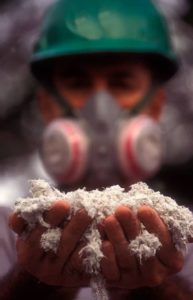
Safety hazards on the job
Regardless of the job, there are always ways employees can be at risk for hazards while working. For individuals who are in the building and construction realm, there are both chemical and physical aspects of the job to be aware of before entering a job site. Globally, there are around 340 million occupational accidents and 160 million victims of work-related illnesses annually, thousands of which could be avoided if workers are informed of safety measures beforehand.
Ergonomic hazards
 With most people working an eight hour day, it’s important to be aware of body movements to avoid muscle strain or injury. Work-related musculoskeletal disorders (MSDs) are the most common workplace injury, accounting for over 30% of all reported cases. For construction workers, repetitive labor such as heavy lifting, operating machinery, and awkward posture can misalign the body. The Bureau of Labor stated that work-related sprains, strains, and tears accounted for more than 300,000 cases in 2018 alone, requiring at least one day off of work.
With most people working an eight hour day, it’s important to be aware of body movements to avoid muscle strain or injury. Work-related musculoskeletal disorders (MSDs) are the most common workplace injury, accounting for over 30% of all reported cases. For construction workers, repetitive labor such as heavy lifting, operating machinery, and awkward posture can misalign the body. The Bureau of Labor stated that work-related sprains, strains, and tears accounted for more than 300,000 cases in 2018 alone, requiring at least one day off of work.
MSDs are associated with higher spending for employers such as absenteeism, lost productivity, and increased healthcare and disability costs. When working long and strenuous hours, stretching and establishing proper lifting measures can help lower the risk of injury for jobs involving manual labor.
Work organization hazards
 Among workplace demands, collaboration, and communication, it can be easy to become overwhelmed for employees without helpful leadership. The American Institute of Stress reports that one in four workers view their jobs as the number one stressor in their lives, with 26% of individuals stating that they were often or very often burned out or stressed by their work. With enough going on during the day, having added stressors such as poor workplace communication can hinder one’s job performance.
Among workplace demands, collaboration, and communication, it can be easy to become overwhelmed for employees without helpful leadership. The American Institute of Stress reports that one in four workers view their jobs as the number one stressor in their lives, with 26% of individuals stating that they were often or very often burned out or stressed by their work. With enough going on during the day, having added stressors such as poor workplace communication can hinder one’s job performance.
Having a structured and organized work environment can help increase productivity and safety for workers. Often overlooked, establishing a workspace that allows clear communication and goals can make workflow a lot easier for both employees and management. Because organizational effectiveness depends on adapting to an organization’s needs, employers need to have leaders who can translate insights and day to day tasks easily.
Asbestos
 Asbestos is a mineral that has been used for decades by industrial workers due to its chemical and heat durability. Found in a variety of commercial and industrial building products, asbestos fibers are resilient and cost-effective, making them an ideal mineral to use. It wasn’t until the late 1970s that asbestos was recognized as a health threat to humans, as inhaling fibers can inflame and scar organs, leading to chronic health issues.
Asbestos is a mineral that has been used for decades by industrial workers due to its chemical and heat durability. Found in a variety of commercial and industrial building products, asbestos fibers are resilient and cost-effective, making them an ideal mineral to use. It wasn’t until the late 1970s that asbestos was recognized as a health threat to humans, as inhaling fibers can inflame and scar organs, leading to chronic health issues.
Exposure to asbestos can develop into a number of serious lung related diseases, such as asbestosis, lung cancer, and mesothelioma. Industrial and trade fields are some of the most at-risk individuals for exposure. Workers conducting demolition or projects on older buildings can disturb products containing asbestos, leaving them susceptible to contact with the carcinogen. Today, it’s estimated that more than 125 million people worldwide are exposed to asbestos while working, as many countries have not yet implemented a ban that can further protect workers.
Toxic fumes
 While few occupational chemical injuries are reported each year, the severity of these injuries increases the importance of prevention. With an estimated 650,000 existing chemical products used on jobs (plus hundreds more introduced annually), this poses an issue for exposed workers and employers. According to a 2018 UN report, a worker dies from toxic exposure in the workplace every 30 seconds. The most common workplace chemical exposure risk is accidentally breathing in toxic fumes, although skin, eye, or ingestion is prevalent as well.
While few occupational chemical injuries are reported each year, the severity of these injuries increases the importance of prevention. With an estimated 650,000 existing chemical products used on jobs (plus hundreds more introduced annually), this poses an issue for exposed workers and employers. According to a 2018 UN report, a worker dies from toxic exposure in the workplace every 30 seconds. The most common workplace chemical exposure risk is accidentally breathing in toxic fumes, although skin, eye, or ingestion is prevalent as well.
A toxic reaction may lead to visible damage, or cause a cognitive decrease in human performance or bodily functioning. Immediate effects from exposure can include skin or eye irritation, burns, or poisoning. While it’s easy to notice physical effects, underlying long term risks can develop such as organ damage, developmental disabilities, and a weakened immune system. In lower doses, chemical exposure is not as detrimental; however, repeated contact with chemical fumes can accumulate in the body and cause health problems such as chemical pneumonia or cancer.
Staying safe
Having a safe and healthy work environment allows employees to perform better and be more efficient throughout the day. While it’s an employer’s responsibility to maintain safety standards to avoid and prevent injury for their employees, it’s also a worker’s job to follow and uphold regulations to make sure they’re safe. Being cognizant of potential job hazards can help workers stay more alert and unscathed.






